4A0-110 Online Practice Questions and Answers
Two routers are physically connected running ISIS. ISIS L2 adjacency is up and running but L1 adjacency is not up. Review the configuration information shown below: Which of the following statement best describe the cause of the problem? Select one answer only.
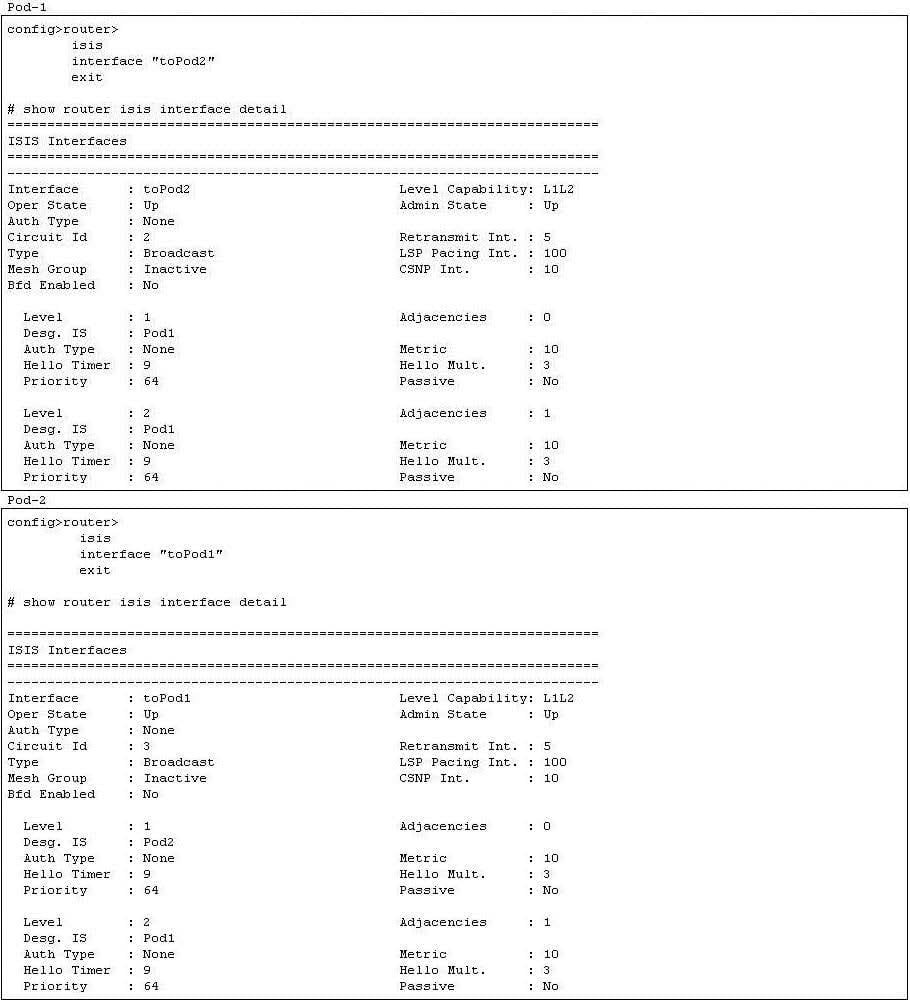
A. The ISIS interface level is not configured on both routers
B. The ISIS interface type should be configured as point-to-point interfaces
C. ISIS System IDs are not configured on both routers
D. ISIS Area addresses are not configured on both routers
E. ISIS level capacity are not configured on both routers
Two routers are physically connected to each other with ISIS configured. No ISIS adjacency can be found on both routers. Ping works fine on the local and the remote interface addresses on both routers. Review the confguration information shown below. Which of the following statements best describe the cause of the problem? Select one answer only.
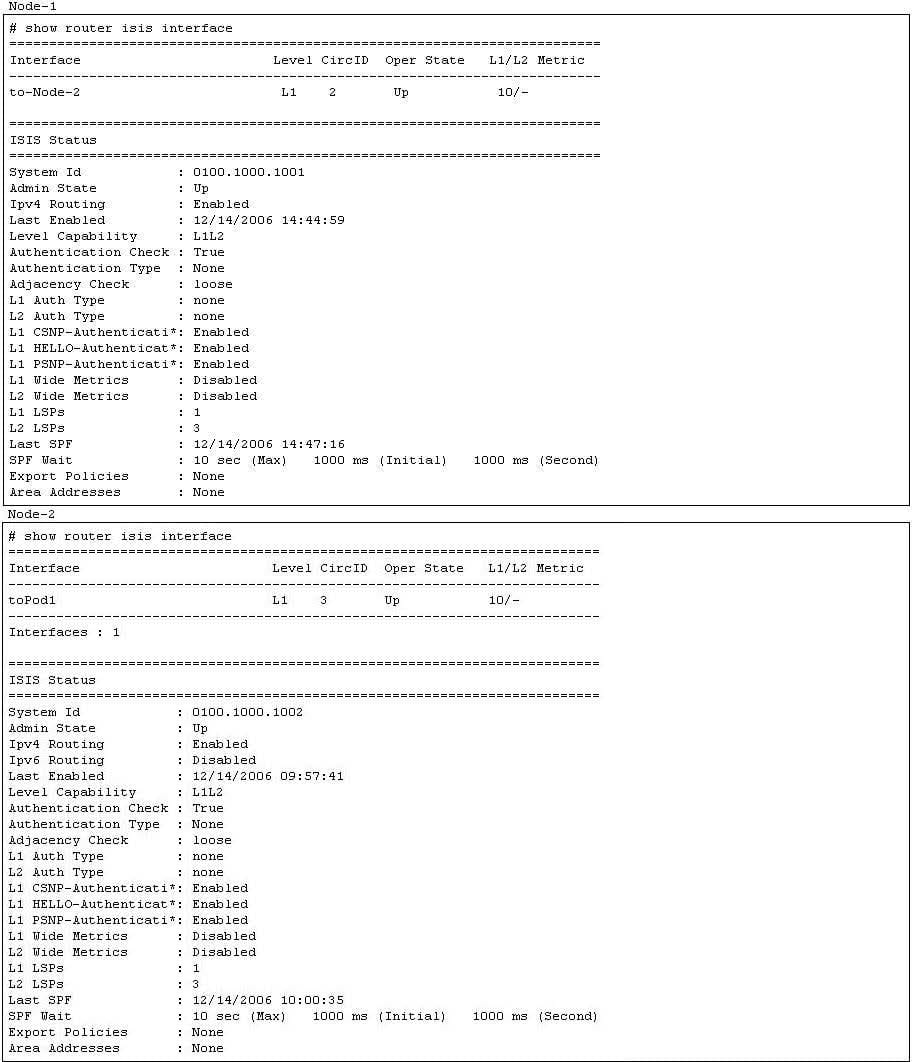
A. The ISIS interface level configured does not match the ISIS level capability supported on the routers
B. The ISIS authentication check is enabled but there is no authentication type and password configured
C. ISIS Area addresses are not configured on both routers
D. L1 wide Metrics are disabled on the routers
E. ISIS Circuit id does not match on Node-1 and Node-2
What are the typical RIP related issues found during troubleshooting?
A. Interface filters
B. Broadcast/Multicast mismatch
C. Area id not match with neighbor
D. Group name not match with neighbor
E. Hop count too high
Node A has an active BGP route 10.1.1.1 in its routing table, but the same route is not found in Node D routing table. Which of the following configurations are required to resolve this problem?
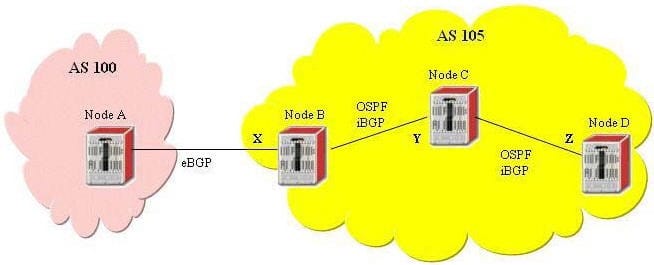
A. Add Interface X to OSPF on Node B as passive interface
B. Redistribute interface address Y and Z into BGP
C. ISIS Enable route-reflection on Node B
D. Enable next-hop-self on Node C
E. Enable route-reflection on Node C
A SDP is created on Node-2 with the far end address set to Node-3. The SDP stays down on Node-2. Based on the following CLI output from Node 2, what is the caused of the problem?
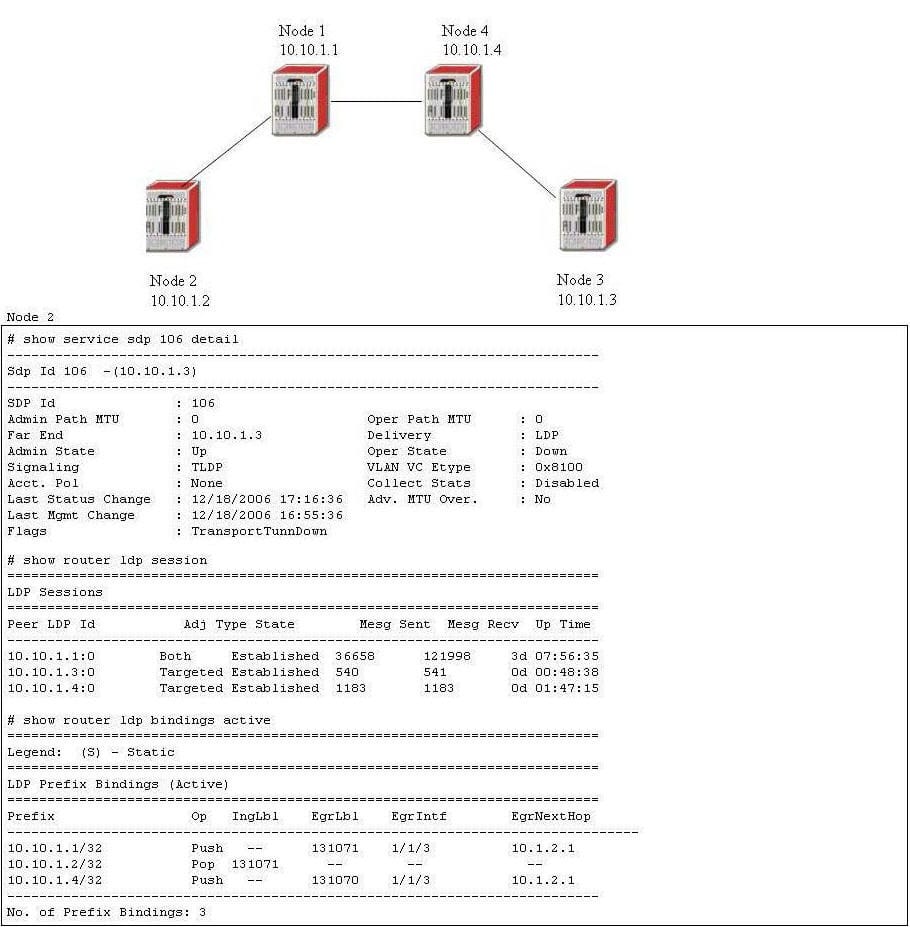
A. No LDP link session between Node 2 and Node 4
B. No LDP link session between Node 4 and Node 3
C. No LDP link session between Node 1 and Node 4
D. No LDP link session between Node 3 and Node 2
E. None of the above
LSP toNode3 is configured on Node1, all hops configured in the lsp path and lsp destination address are reachable via IGP. Both primary and secondary LSP paths are down with failure code equal toRoute ToDestionation. What is the potential cause of this problem?

A. A loose hop has to be configured in path toNode3-loose
B. The secondary path should not be configured as standby path
C. No traffic engineering information is exchanged by the IGP protocol
D. CSPF cannot be enabled with strict hop path
E. MPLS should not be enabled on interface toPod3
What MPLS tunnel label(s) will be used in the data packet traveling on LSP toR4 FRR leaving from Node 3 to Node 4?
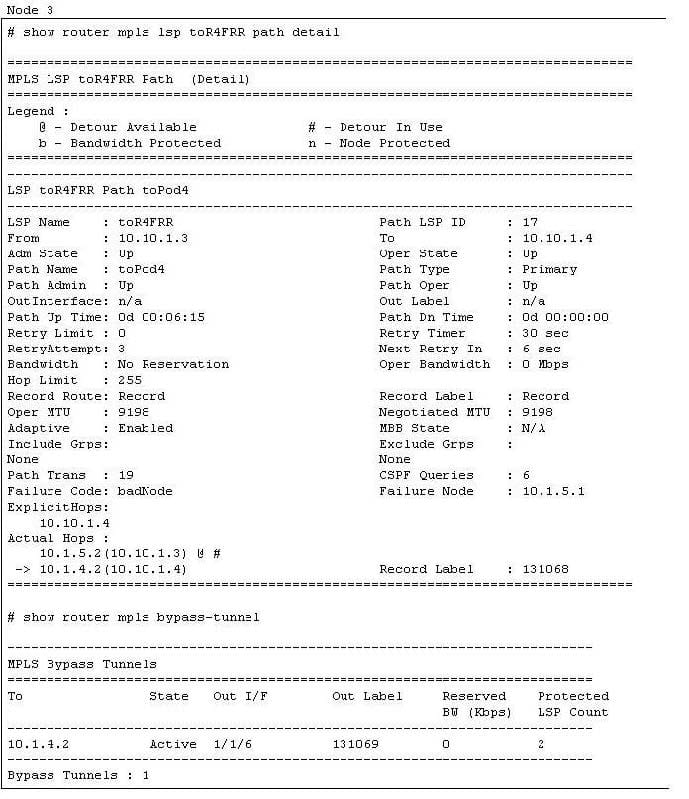
A. 131069 131068
B. 131068 3
C. 131069
D. 131068
E. No label is used in the data packet
A LSP is configured with one primary path and one secondary path as below. What configuration is required to make the LSP non-revertive. Choose the best answer.

A. Turn off CSPF and remove all the bandwidth reservations
B. Remove the primary path and configure both paths as secondary
C. Under asp toRouter3? configure on-revertive
D. It is not possible to configure the LSP as non-revertive
E. MPLS fast re-route has to be enabled to make it non-revertive
Which one of the following CLI can be used to view all management VPLS configured on a 7x50?
A. Show service service-using m-vpls
B. Show service service-using
C. Show router vpls detail
D. Show service id
E. There is no CLI command to display management VPLS
Node 1 and Node 2 are directly connected running LDP. The system ip address of Node 2 is 10.10.10.1.2. Based on the following display, why is the sdp down?
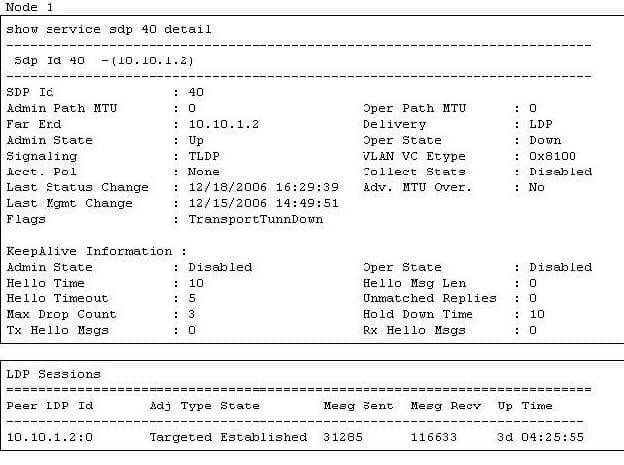
A. Local SDP id does not match with the remote sdp id.
B. Far End IP address is not reachable.
C. Keepalive has to be enable on the SDP.
D. LDP is not enable on the remote node's interface.
E. Targeted LDP session is disabled on the remote node.
The mesh-sdp binding for a VPLS configured on Node 1 is down with an error serviceMTUMismatch. One sap is configured in the VPLS and it is up with default mtu 1514. The LDP binding display on Node 1 shows that there is a mismatch on the MTU value. What are the required configurations on Node 1 to bring the VPLS up?

A. Set the sap port mtu to 9176
B. Set the service-mtu to 9176
C. Set the service-mtu to 9190
D. Set the sap port mtu to 9190
E. Set the service-mtu to 1514
Which command is used to view alarms of all severity levels on the Alcatel 7x50?
A. Show log log-id 99
B. Show alarm
C. Show log filter-id 1
D. Show log log-id 100
E. Show log 99
A policy is configured to redistribute four active static routes into ISIS. No ISIS route is received on the far end, what is the cause of the problem?

A. Action accept?has to be configured for entry 10
B. Default-action has to be configured as accept
C. Import policy should be configured under ISIS instead of export policy
D. Within entry 10, to protocol isis has to be configured
E. A prefix list has to be configured to filter the routes
VPRN 300 is configured between Node 3 and Node 4. Node 4 receives VPN routes from Node 3 and imports them into the VRF. The entire route-table is displayed below for VPRN 300 on Node
4. When attempting a ping from VPRN 300 on Node 4 to 30.1.1.1 the ping fails. A ping from Node 3 within VPRN 300 to 30.1.1.1 is successful. What is the cause of the problem?

A. No local interface existed in VPRN 300 route-table on Node 4
B. Syntax problem in the ping command
C. Prefix 30.1.1.1 does not exist on the far-end
D. Source address has to be specified in the ping command
E. Next-hop address has to be specified in the ping command
Which one of the following routes should be the best BGP route according to the Alcatel VPRN route selection criteria?
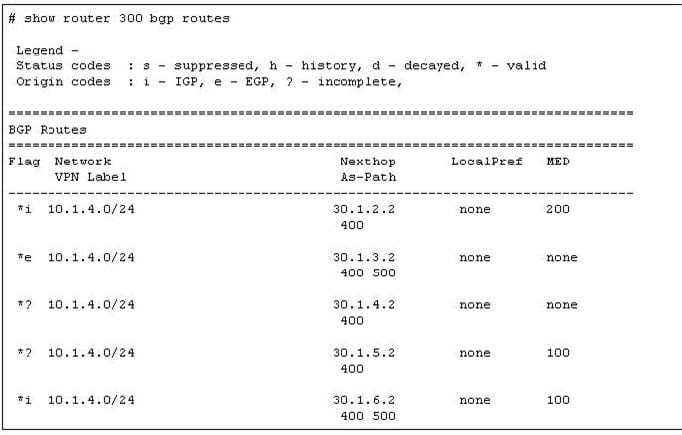
A. The 1st route
B. The 2nd route
C. The 3rd route
D. The 4th route
E. Node of the above
